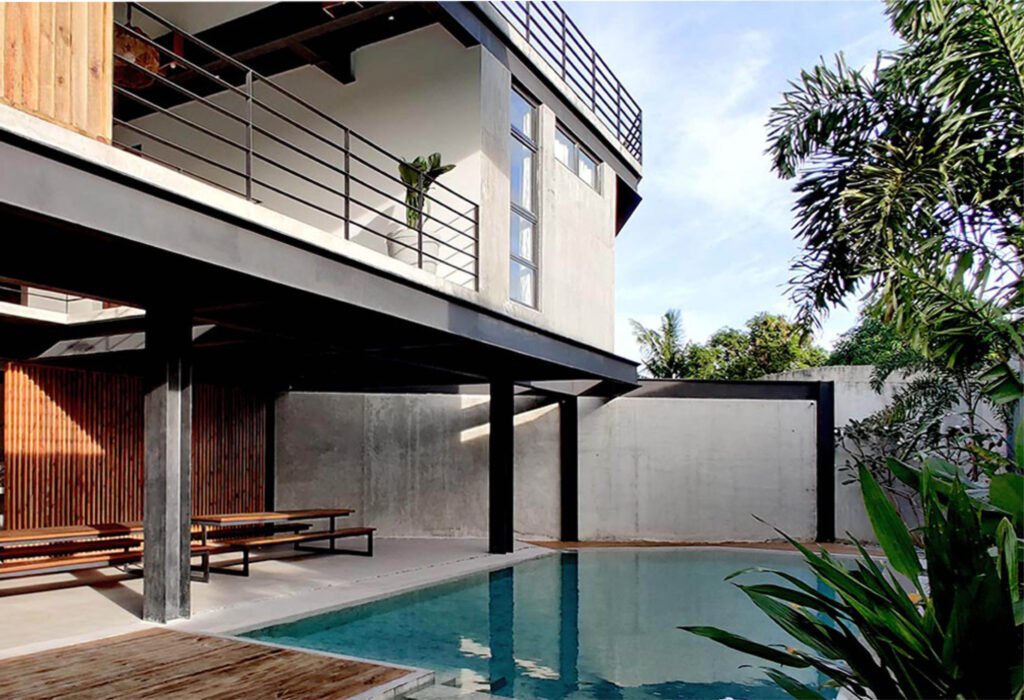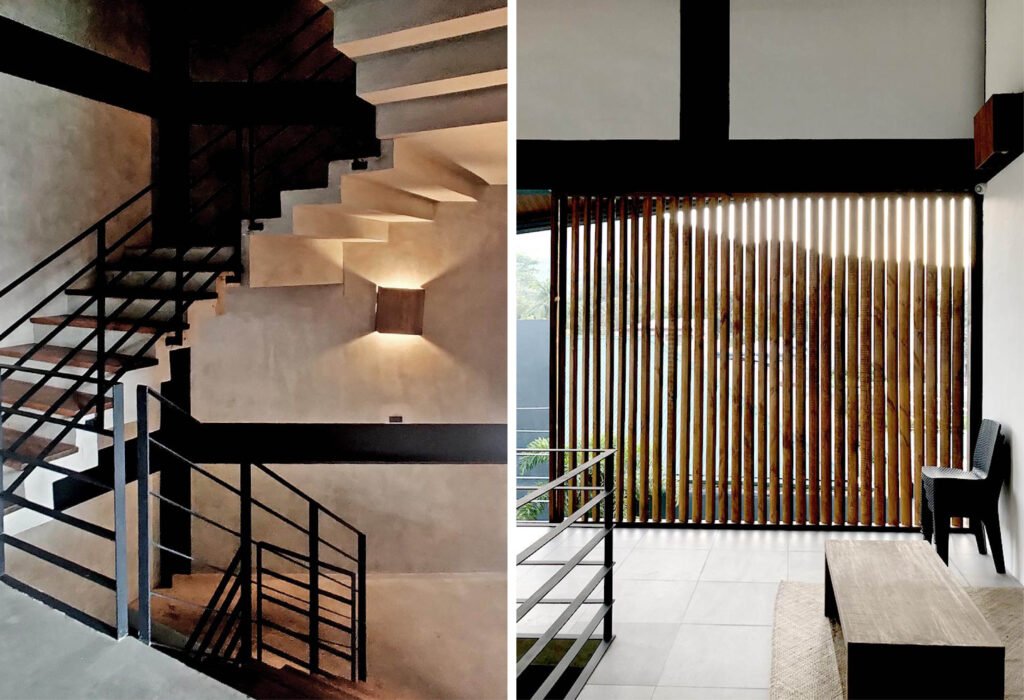Interview Patrick Kasingsing
Images HANDStudio


Our coverage is supported by GROHE Philippines


Congratulations, Yonni, Maricris, and team for getting shortlisted at the WAF! Why did you select CASA TROPICA for the competition? What do you think makes it a winning project?
We decided to enter CASA TROPICA as this project embodies our core agendas as a practice. From its inception to completion, we stayed true to the project vision of creating contextually responsive architecture, with climate-sensitive spaces that are authentically Filipino. We also had a steady and engaging collaboration with our clients, who were one with us in our vision. We don’t want to say that this will be a “winning” WAF entry; rather, we feel that this is a project that truly speaks of who we are as a practice.
How has your experience joining WAF differed from the previous competitions you’ve joined? What about the WAF experience attracted you to join, or are you most looking forward to?
WAF is definitely a highly-competitive tourney as architectural practices join this from all over the world. It gives you bearing as to where you are as a practice in the global arena. It’s very humbling when your entry gets shortlisted as it provides insight into the architectural issues and trends that pique the interest of the broader architectural community. As a young practice, it makes you want to do better and better.
What we also appreciate with WAF is it creates equal opportunities for practices big and small to share their work on the global stage. Projects that win aren’t necessarily from the biggest or most illustrious firms; young practices have more than a fighting chance to get recognized if their work merits it. This is what makes WAF interesting and fulfilling to join.


This is the Philippines’ largest showing at the WAF from the eight years we have competed; would you recommend more studios and firms join the competition? Why so?
Yes, the more the better. The Philippines’ architectural community is highly creative and competitive. WAF is the perfect platform to showcase our talent on the international stage.
How would you describe the role of architecture competitions within the field? Why is it important?
Architecture competitions allow architects to experiment and explore new ideas. This elevates the quality of their work, and in some cases, leads to actual commissions.
What traits do competitions build in a designer?
Competitions make designers bold thinkers. Competitions also up the ante in architectural thinking, making our work collectively more meaningful and relevant.


CASA TROPICA by HANDStudio
Project description edited for brevity
With a stunning view of Mt. Makiling, CASA TROPICA, a hot spring resort villa development, serves as a quiet respite from the hustle and bustle of the Metro.
Situated on a 1,000-sqm property within the rolling terrains of Calamba, Laguna province, the architecture is shaped wholly by its context. The resulting tropical design is molded by climate-sensitive strategies, careful space planning, and raw material explorations.
The resort is comprised of two villas, Diwata and Lambana, both of which are capped by a single roof envelope. The roofscape takes after the form of the tropical thatch roof prevalent in the Southeast Asian region. Beyond sheltering its inhabitants, the roofscape was manipulated to also open the villa spaces to its verdant surrounds.
The architecture takes inspiration from the functional, versatile form of the bahay kubo (Nipa hut). We took after the gable roof of the bahay kubo and further defined and molded it to address the building programs and create suitable responses to its tropical context. The resulting design is both familiar and unique to its context, which is populated by a cluster of cookie-cutter resorts.
Guests are greeted by an open layout where interior and exterior boundaries are blurred. Recreational spaces are covered by the upper floor slabs yet flow continuously to the outdoors. One can traverse the spaces unobstructed—generating a feeling of openness and continuity, both visually and experientially.
The pools are filled with natural hot spring water from the mythical mountain, which is also a dormant volcano.


One of the key features of the project is its multi-level atriums which provide spatial and visual connections for the different levels of the villas. They bring in daylight and facilitate natural ventilation throughout the floors. In our current pandemic scenario, the presence of natural ventilation between floors helps reduce the risk of spreading the virus among resort staff and more importantly, the resort’s guests.
Finished with wood, concrete, steel, and glass, the resort wears an aesthetic of simplicity and material honesty. Structural steel frames were deliberately exposed, with concrete as the predominant surface finish. The raw materiality and simplicity of the design denote a break from the usual resort aesthetic, its earthy palette, and openness to the elements binding it with its lush surroundings.
Murals were painted as artistic anchors in communal areas within the development—Maria Makiling herself makes an appearance in the pool area mural, while a bird in flight was painted in the roof deck area, complementing unobstructed views of Mt. Makiling.
By allowing its natural context to shape and mold its form and function, CASA TROPICA creates a venue for sensorial immersion—achieving a sense of place through an architecture of sensitivity.


Is this your first resort/hotel project? What sets the brief and requirements apart from the usual typologies you work with?
Yonni Habulan and Maricris Ngo-Habulan, principals of HANDStudio: Yes, CASA TROPICA is our first resort project. We’d say it’s a new take on the resort villa typology within its community—veering away from the typical “Mom and Pop” resort model prevalent in the community of Pansol, Calamba. It’s an effort to both contemporize the typology but also employ a more sensitive approach to resort design; allowing the location’s natural character to shape the development instead of taming it to fit the brief.
Was there some pushback from the client about the spare and utilitarian material palette you used for the resort?
Our clients were actually the purveyors in maintaining a very raw and unadorned material palette for the project! So, no pushback at all!
Were there any executions in your original design that didn’t materialize, be it from COVID-19, budgetary constraints, etc?
We started the design process and commenced construction before the COVID-19 pandemic. However, construction stalled halfway through due to the lockdowns.
As in any project, the budget will always impact material selection and implementation. One design feature that has yet to be installed in the project is the customized screens we designed to create shading in the communal spaces. The screens were perforated with an abstract pattern we generated – referencing the lush foliage of the frangipani tree. Our clients are currently looking for suppliers who can execute the vision.




What steps were taken to ensure that the development celebrated and preserved as much of its natural locale as possible?
We made sure that we kept its natural setting untouched. In addition, we made sure to add further landscaping and vegetation within the property to further enhance the project’s biophilic attributes. The visual connection with Mt. Makiling was first and foremost the key consideration we had when designing the project. The site was blessed with an unobstructed view of the mythical mountain, and we knew from the start that this should be acknowledged and celebrated as not all sites had this attribute.
Let’s talk about the two villa’s striking shared roof; what steps were taken to ensure its aero dynamism and durability especially since the structure is not surrounded by many buildings and is located in a typhoon-prone locale?
The roof form is an abstraction of the bahay kubo roof. We stretched the profile to cover the entirety of the two villas. From there we made strategic cut-outs to open up the roof and maintain visual connection with Mt. Makiling. As we were carving out the roof, we made sure that we considered its structural stability by maintaining reasonable overhang dimensions, and introducing appropriate structural members, while creating a very sculptural, evocative form. The shape and roof slope ensures that it stays secure even during inclement weather.


What were more COVID-19-shaped spatial moves and programming pursued for the resort?
As mentioned prior, the project commenced construction even before the pandemic hit—so there were no specific steps taken to consider the “new normal” imposed by the pandemic. However, how the project was conceived and designed actually allowed it to provide a safe and healthy environment for its guests and staff.
Our strategies of harnessing natural ventilation throughout the project, and creating reasonably proportioned spaces (both outdoor and indoor spaces), enabling the implementation of proper social distancing and the creation of well-ventilated spaces. The use of biophilia further enhanced the project’s thrust into health and well-being.
With our prescient design moves, the resort actually handled the pandemic with relative ease. It may be a community resort development, but it actually became a safe haven for guests to have a quick leisurely trip away from the city—without compromising their safety.
Our clients are proud to say that during the height of the pandemic, no guest or staff has contracted COVID-19 within the resort’s premises thus far.
The bahay kubo is an oft-used jump-off point for the resort typology; how did you innovate and take the spirit of this hardy and versatile dwelling further?
We looked at the bahay kubo as a reference to innovate rather than replicate; we used it to define our agenda in designing the architecture. How can the bahay kubo be reinterpreted into a new form to meet the needs of the project and its typology? How can we infuse identity without sacrificing its soul? Guided by these questions and driven by the vision of our clients, we proceeded to craft CASA TROPICA as a development that sought to marry age-old wisdom with contemporary creature comforts, informed, shaped, and ultimately, enhanced by nature.


What would you say is the most challenging part of the project?
For CASA TROPICA, we feel that the challenge that tried us the most was how to do it right in terms of project typology, location, and vernacular. Alongside our clients, we were actually concerned if our take will be accepted by local guests, as it was a new way of doing things in our locale. We were trying to redefine the Pansol hot spring resort, and there were some speed bumps along the way; the community wasn’t as welcoming at the beginning. Fortunately, when it finally opened, CASA TROPICA actually became a catalyst for the improvement of the resort villas in its locality.
You have joined WAF previously with future projects; would you say that there is more of a challenge to talk and defend a built project in front of the WAF jury?
Yes. A built project will be assessed not only for its design integrity but also for social impact. It makes it more challenging, but we feel that this is what will make the presentations more interesting.
What has the project taught you about your craft and how it can also bring man closer to nature and enrich his/her/their wellbeing.
CASA TROPICA is for us the perfect embodiment of a mutually creative and fulfilling collaboration with our clients. We were constantly pushing each other’s perceptions on how we can do it better. We conceived a vision with them, and we all stuck with it from inception to realization. •




One Response